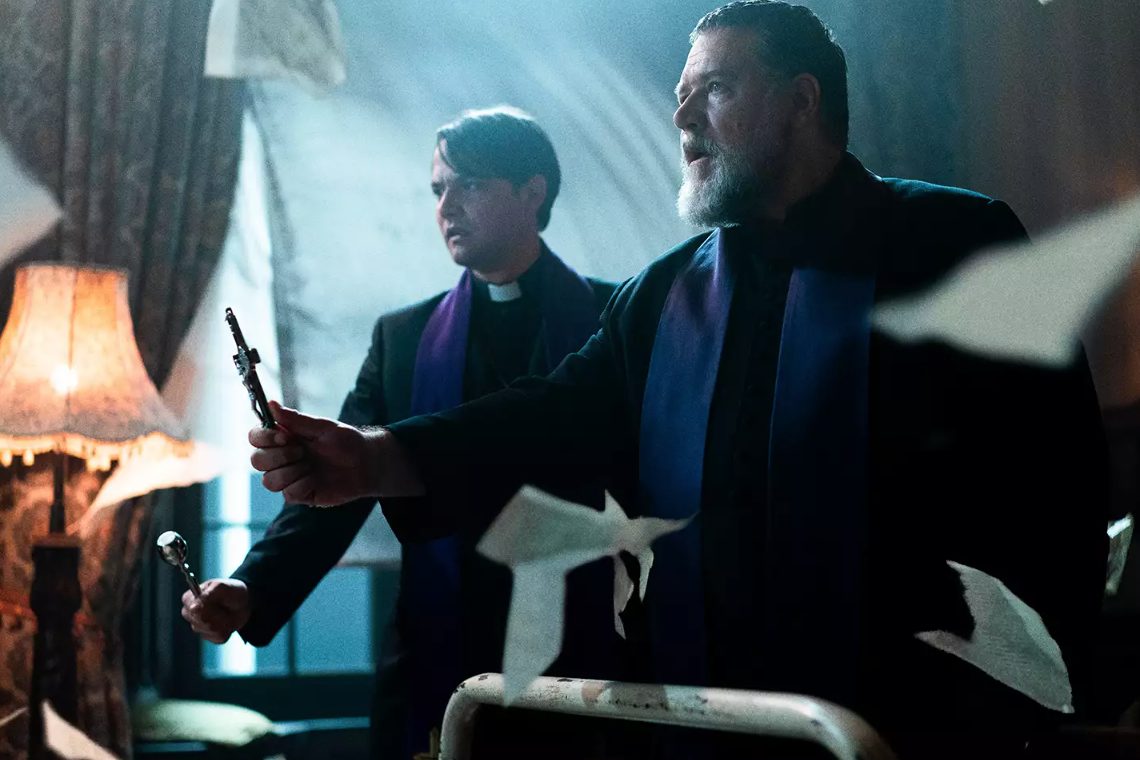(ZENIT News / Rome, 08.03.2023).- Here is the translation into English of a press release of the International Association of Exorcists, a body that enjoys the recognition of the Church, given the forthcoming release of a film inspired on the deceased priest and exorcist, Father Gabriel Amorth.
* * *
Television, platforms and social networks are announcing these days the coming release in April of the film “The Pope’s Exorcist,” directed by Australian Julius Avery. The title is already pretentious in and of itself. To watch the film’s trailer confirms, in case any proof were needed, not only its splatter-cinema quality, authentic horror film subgenre, but its little reliability on such a delicate and relevant topic.
At the center of the film is the figure of Father Gabriel Amorth (1925-2016), exorcist of the Diocese of Rome for thirty years, played by New Zealand actor Russell Crowe, known to the general public for his leading role in the film The Gladiator, which won him an Oscar in 2001.
After watching a trailer, here are some observations, while waiting to see and assess the film in its totality when it arrives in cinemas. At that time we will publish a more detailed press note.
Leaving aside what at first sight seems like a quote from other movies (as, for example, the exorcist who himself ends up being the possessed), observed, in the first place, is that the renown Hollywood actor doesn’t remind one at all in appearance, but especially in manners, of the human and priestly profile of Father Amorth, whose memoirs (“An Exorcist Tells His Story” and “Nuovi racconti di un esorcista” [“New Stories of An Exorcist”], the production company specifies, that the film is a free adaptation. We observe: with too much freedom!
The production company and the Director are probably interested in the “striking” association between the exorcist and the famous gladiator of twenty years ago, and not in the spirit of service that moves the former in his ministry of consolation. Then the Catholic Church is represented by an equally incredible Pope, played by Italian actor Franco Nero. Finally, the Vatican environments, painted with the habitual and proven gamut of chiaroscuros, confer on the film a “Da Vinci Code” effect, to infuse in the spectator the usual doubt: Who is the real enemy? The devil or ecclesiastical ”power”?
We end these brief considerations with a reference to the so-called “special effects,” inevitable in any film dedicated to the topic of diabolic possession. As in other films, everything is exasperated, with striking physical and verbal manifestations, typical of horror movies.
However, such a way of recounting Father Amorth’s experience of exorcism, in addition to being contrary to the historical reality, distorts and falsifies what is really lived and experienced during the exorcism of the truly possessed, which Catholic exorcists carry out in keeping with the guidelines given by the Church. Moreover, it is offensive to the state of suffering, in which those are who are victims of an extraordinary action of the devil, find themselves.
In regard to the spectator, what should be said? Exorcism presented this way becomes a show destined to arouse strong and unhealthy emotions, thanks to the scary scenography , with sound effects that only awaken anxiety, uneasiness and fear in the spectator.
The end result is to instil the conviction that exorcism is an abnormal, monstrous and terrifying phenomenon, whose sole protagonist is the devil, whose violent reactions can be addressed with great difficulty, which is exactly the opposite of what happens in the context of exorcism practiced in the Catholic Church, in obedience to the guidelines she dictates.
The vision of the film “Libera Nos” [“Set Us Free”] is very different. The triumph over evil, with wide distribution and sponsored by the International Association of Exorcists, which shows exactly what exorcism is in the Catholic Church, what the genuine features are of the exorcist priest and how exorcism is a highly joyful event because, on experiencing the living presence and action of Christ the Lord and of the Communion of Saints, those tormented by the devil’s extraordinary action, gradually find liberation and peace.
Translation of the Italian original into Spanish by ZENIT’s Editorial Director and, from Spanish into English, by Virginia M. Forrester



